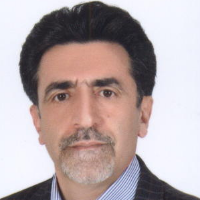Increasing water productivity by modifying the design of surface irrigation systems based on multi-objective optimization
Surface border irrigation design and variables determination using multi-objective optimizationM. Saleki , M.R. Nouri , H.R. Salemi , R. Fatahi AbstractDesign of surface border irrigation systems is usually performed based on empirical relations presented in the literature or through simulation results in various models. These methods do not allow investigating the impact of all design variables on different irrigation indices.Designing based on minimizing the volume of water input along with maximizing indices such as application efficiency, distribution uniformity, and irrigation adequacy is a new approach that can provide the best results through multi-objective optimization. The best choice for design variables, including length, width, slope, inflow rate, and cut-off time in a field, can be obtained using this method to achieve optimal indices.In this research, by measuring the water advance in sample plots in a field in Isfahan and simulating water movement in the border strips, the soil infiltration coefficients were obtained. Based on this, for a net irrigation depth of 75 mm and a roughness coefficient of 0.15, 56700 closed-end border irrigation events were simulated using WinSRFR 5.1 software. Among the obtained results, using the constrained objective function multi-objective optimization method, with the aim of minimizing the volume of water input and application efficiency higher than 90%, distribution uniformity and irrigation adequacy more than 0.8, 515 optimal options for designing the irrigation border strips were determined, and among them, some options were presented for the optimal design of the irrigation border strips in this field and similar fields.The results show that the volume of water input in the optimized options is between 712.8 and 757.3 cubic meters per hectare, which is significantly different from the measured values in the field. The method presented in this research can be used as a new approach for designing surface border irrigation systems and increasing water productivity in agriculture.
-
Analysis of the Impact of Climate Change on Temperature and Precipitation in Shahrekord Using Outputs from the Sixth Assessment Report, with Emphasis on Sustainable Development Scenarios
Seyed Mohammadreza Hosseini-Vardanjani, Mojtaba Khoshravesh *, Roohollah Fatahi Nafchi, Reza Norooz-Valashedi, Yavar Pourmohamad
Iranian Journal of Irrigation & Drainage, -
The Effect of Climate Change on Temperature and Precipitation in Two Different Climates Using CMIP6 Models and SSP Scenarios
Seyed Mohammadreza Hosseini-Vardanjani, Mojtaba Khoshravesh *, Rooholah Fatahi Nafchi, Reza Norooz-Valashedi, Yavar Pourmohamad
Irrigation & Water Engineering,


